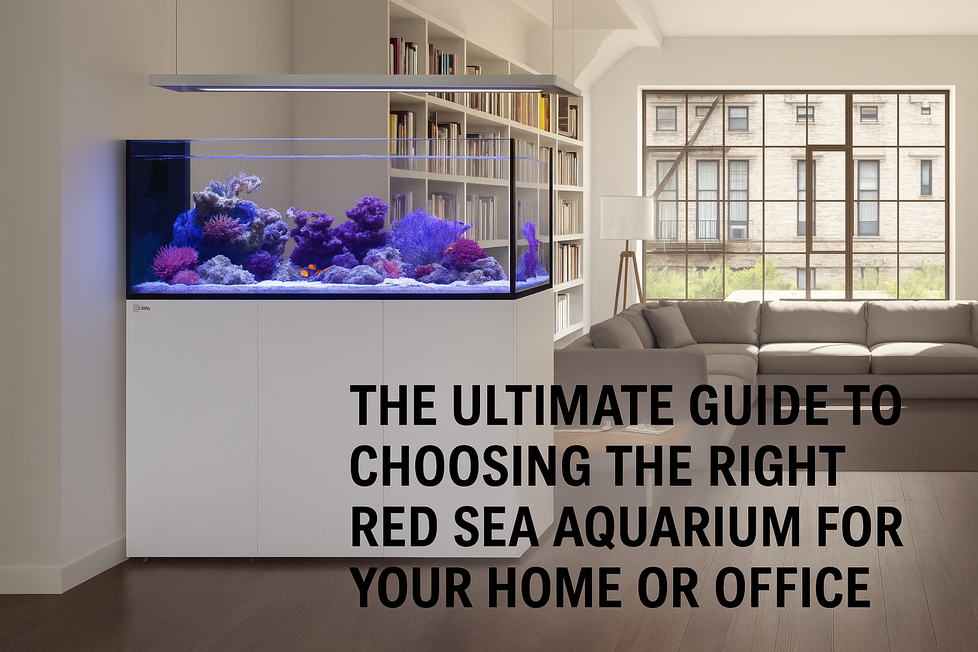Keep Your Aquarium Inhabitants Comfortable, Healthy & Stress-Free
One of the most critical aspects of aquarium care—whether for freshwater or marine systems—is maintaining a stable and species-appropriate temperature. Each fish, plant, coral, or invertebrate thrives within a specific thermal range. Water that’s too warm or too cold can lead to stress, illness, reduced coloration, and even death.
This guide outlines the optimal temperature ranges for popular species and setups, along with key tips on maintaining the perfect aquatic climate in your tank.
Why Temperature Matters in Aquariums
• Fish and invertebrates are ectothermic, meaning they rely on external temperature for bodily functions.
• Temperature affects:
• Metabolism and digestion
• Immune response
• Reproduction and spawning
• Oxygen levels in water
• Inconsistent or improper temperatures cause:
• Increased stress and disease susceptibility
• Poor growth in corals and plants
• Aggression or lethargy in fish
Temperature Ranges by Species & Setup
Below is a practical reference chart for maintaining ideal temperatures in various aquarium environments:
| Aquarium Type / Species | Recommended Temperature Range | Notes |
|---|---|---|
| Freshwater Community Tank | 24–27°C (75–81°F) | Ideal for tetras, rasboras, mollies, guppies, gouramis |
| Bettas | 25–28°C (77–82°F) | Warm water improves colour and fin health |
| Goldfish (Fancy) | 20–23°C (68–73°F) | Fancy varieties prefer slightly warmer water than common goldfish |
| Goldfish (Common) | 18–22°C (64–72°F) | Coldwater fish – no heater usually needed |
| Axolotls | 16–20°C (60–68°F) | Too much heat can be fatal; chillers may be required |
| Discus | 28–30°C (82–86°F) | Require consistent high temperatures and excellent water quality |
| Planted Aquariums | 22–26°C (72–79°F) | Balance temperature with light, nutrients, and CO₂ |
| Marine Fish-Only | 24–26°C (75–79°F) | Stable temps are key for long-term fish health |
| Reef Tank (SPS/LPS Corals) | 24–25.5°C (75–78°F) | Temperature spikes can cause coral bleaching or stress |
| Marine Invertebrates (Shrimp, Anemones) | 24–25.5°C (75–78°F) | Very sensitive to fluctuations—use a heater controller |
| Coldwater Native Species | 10–20°C (50–68°F) | Ideal for temperate tanks and native UK species |
How to Maintain the Ideal Temperature
1. Use a Quality Heater or Chiller
Match heater wattage to your tank size. For marine and high-value tanks, consider a titanium heater or inline chiller with controller.
2. Add a Digital Thermometer
Keep a separate, accurate thermometer in the tank to verify readings.
3. Stabilise Room Temperature
Avoid placing tanks near windows, heaters, or radiators. Room cooling (fans or A/C) can reduce equipment strain.
4. Automate with Temperature Controllers
Dual-stage controllers can run both heaters and fans/chillers to maintain an exact range.
5. Allow for Seasonal Adjustments
In summer, reduce photoperiods to avoid overheating. In winter, double-check heater calibration and backup power options.
Signs Your Temperature Is Off
• Rapid breathing or gasping at surface
• Lethargy or hiding
• Loss of appetite
• Unusual aggression or swimming patterns
• Fading colours or fin rot
Take corrective action gradually to avoid shocking your livestock. Drastic temperature shifts are often worse than a slightly “off” stable range.
Shop Temperature Solutions at Charterhouse Aquatics
Explore our range of:
• Aquarium Heaters – From beginner to advanced systems
• Aquarium Chillers & Cooling Fans – Reliable solutions for heat-sensitive tanks
• Digital Thermometers & Controllers – For accurate readings and automated safety
• Backup & Redundancy Tools – Spare heaters, battery backups, and dual heaters for larger systems


